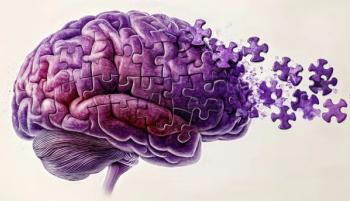What do physicians intend by the term “disease”? This may strike many clinicians as a philosophical question more suited to medieval scholastics than to practicing physicians. But the recent 235-page report on “systemic exertion intolerance disease” (SEID) from the Institute of Medicine1 (IOM) casts this question in a new light and has many practical implications for patients, physicians, and third-party payers.
The definition of “disease” has been a matter of contention since the dawn of clinical medicine. For example, the ancient Greek academies of Knidos and Kos had differing views of disease.2 Knidos, the school of Aesculapius, recognized the discrete morbid entity-such as an abscess or tumor-as the defining feature of disease, subservient to the general rules of pathology. The more empirical school of Kos, associated with Hippocrates, emphasized the sick individual with his particular kind of misery. In effect, these two schools saw disease either as a specific pathological process or as a particular human experience whose character was determined by the patient’s manner of presentation.
In the 19th century, medical science was revolutionized by the German pathologist Rudolf Virchow and his famous pronouncement: Es gibt keine Allgemein krankheiten, es gibt nur Local krankheiten-“There is no general, only local, disease.” But Ludwig Aschoff, Virchow’s colleague, argued that Virchow wished merely to localize lesions, not diseases.3 There are indeed reasons to believe that Virchow conceptualized disease as a generalized condition of the living organism, which, unlike lesions, disappears when the organism dies.
To this day, the definition of disease remains controversial. Recently, in its deliberations on obesity, the AMA requested an advisory opinion from its Council on Science and Public Health. The question before the Council was, “Is obesity a disease?” The Council’s considered response was a lesson in both the limits of language and the merits of humility: “Without a single, clear, authoritative, and widely accepted definition of disease, it is difficult to determine conclusively whether or not obesity is a medical disease state.”4
IOM's clinical criteria for SEID diagnosis:
- Substantial reduction or impairment in the ability to engage in pre-illness levels of occupational, educational, social, or personal activities
- Either cognitive impairment or orthostatic intolerance (or both)
Note that the SEID criteria do not require the identification of any specific biological, biochemical, or neuroanatomical abnormality. Rather, they entail a substantial degree of distress and impairment.
Unfortunately, in the past 50 years, narrow interpretations of Virchow, such as those of the late psychiatrist Thomas Szasz, have dominated discussions of what constitutes “disease.”5 This has led to the claim-mistaken, in my view-that only those conditions with specific and identifiable pathophysiology or anatomical abnormalities “count” as disease.
Yet these criteria fly in the face of medical diagnosis throughout the ages and are not consistent with several modern-day diagnoses in the fields of neurology, psychiatry, and pain medicine. Physicians in these fields recognize that many states of severe suffering and incapacity cannot yet be causally linked with specific biochemical or anatomical findings.5 For example, migraine headache, trigeminal neuralgia, and even epilepsy remain clinical diagnoses-made primarily on the basis of the patient’s history and subjective reports. (Physical examination and imaging studies, of course, are important in ruling out certain lesions, such as a brain tumor.)
This is also true for the vast majority of psychiatric disorders. It is the patient’s degree of suffering and incapacity-or distress and dysfunction-that defines a state of disease (etymologically, di-sease). Of course, pathophysiologic correlates, imaging studies, and biomarkers can help us understand the underlying biological nature of the specific disease process and devise appropriate treatments. However, such abnormalities are neither necessary nor sufficient for the recognition of “disease” as a profound and troubling human experience.5
Indeed, in the edition of Harrison’s Principles of Internal Medicine that I used when I was a resident, the following breathtakingly broad definition of disease was put forth:
The clinical method has as its object the collection of accurate data concerning all the diseases to which human beings are subject; namely,
all conditions that limit life in its powers, enjoyment, and duration
[italics added].
6
The editors went on to say that the physician’s “. . . primary and traditional objectives are utilitarian-the prevention and cure of disease and the relief of suffering, whether of body or of mind . . . [italics added]”6
Now comes the IOM report, which has renamed so-called chronic fatigue syndrome (also called “myalgic encephalomyelitis”) as “systemic exertion intolerance disease” (SEID) and proposed essentially clinical criteria for its diagnosis. (Our word “clinical” is derived from the Greek klinikÄ “bedside”-so, diagnosis made at the bedside). In brief, the SEID criteria entail the following:
• Substantial reduction or impairment in the ability to engage in pre-illness levels of occupational, educational, social, or personal activities
• Postexertional malaise
• Unrefreshing sleep
• Either cognitive impairment or orthostatic intolerance (or both)
Note that the SEID criteria do not require the identification of any specific biological, biochemical, or neuroanatomical abnormality. Rather, they entail a substantial degree of distress and impairment. To be clear: the report did find evidence of a strong association of SEID with diminished natural killer cell function; Epstein-Barr virus infection; decreased cardiopulmonary function; and neuropsychiatric testing abnormalities-but these correlates are not required for diagnosis of SEID.1 Similar biomarkers and associated abnormalities have been found in several psychiatric disorders. For example, abnormal eye movements can distinguish persons with schizophrenia from normal persons with considerable accuracy.7 Nevertheless, current diagnostic criteria for schizophrenia remain clinical, as with SEID.
Already, the IOM report has attracted sharp criticism, with some physicians questioning the lack of specificity in the SEID criteria and worrying about the potential for overdiagnosis and even outright fraud. These risks are not trivial, but I would argue that as physicians, our first duty is the recognition and relief of human suffering and incapacity, whether we can identify the specific pathophysiology underlying the patient’s condition. With respect to SEID, the IOM report makes it abundantly clear that this condition can have profoundly adverse effects on the sufferer’s social and vocational function.1
To be sure, we must continue to investigate the biological underpinnings of SEID, just as we must in disease states such as schizophrenia and atypical facial pain. When our patients are suffering and incapacitated owing to some internal process, however, we have both clinical and ethical reasons to recognize that disease is present, and to do our utmost to treat it.
This article was originally posted on 2/24/2015 and has since been updated.
Disclosures:
Note to readers: As with all of our blogs, the opinions expressed in this commentary are solely those of the author. Comments not followed by full names and academic titles will either be removed or heavily monitored. –Psychiatric Times
References:
1. Institute of Medicine. Beyond Myalgic Encephalomyelitis/Chronic Fatigue Syndrome: Redefining an Illness. Washington, DC: The National Academies Press; 2015. http://www.iom.edu/mecfs. Accessed February 18, 2015.
2. Marketos SG. History of Medicine.http://asclepieion.mpl.uoa.gr/parko/marketos2.htm. Accessed February 18, 2015.
3. Virchow R. Introduction. In: Rather LJ, trans. Disease, Life and Man: Selected Essays by Rudolf Virchow. Stanford, CA: Stanford University Press; 1958.
4. Fryhofer SA. Is Obesity a Disease? Resolution 115-A-12. CSAPH Report 3-A-13. http://www.ama-assn.org/assets/meeting/2013a/a13-addendum-refcomm-d.pdf. Accessed February 18, 2015.
5. Pies R. On myths and countermyths: more on Szaszian fallacies. Arch Gen Psychiatry. 1979;36:139-144.
6. Isselbacher K, ed. Harrison’s Principles of Internal Medicine. 8th ed. New York: McGraw-Hill; 1977.
7. Benson PJ, Beedie SA, Shephard E, et al. Simple viewing tests can detect eye movement abnormalities that distinguish schizophrenia cases from controls with exceptional accuracy. Biol Psychiatry. 2012;72:716-724.
















